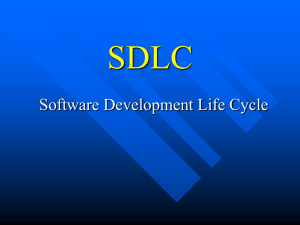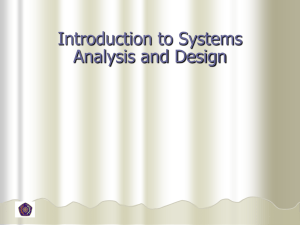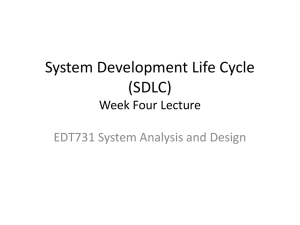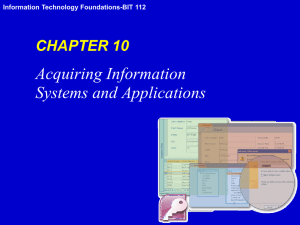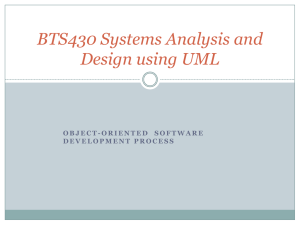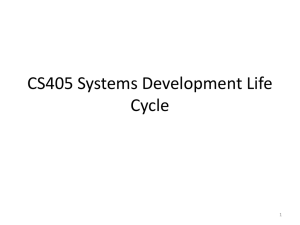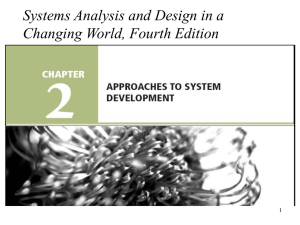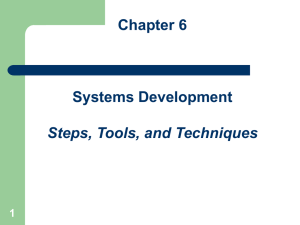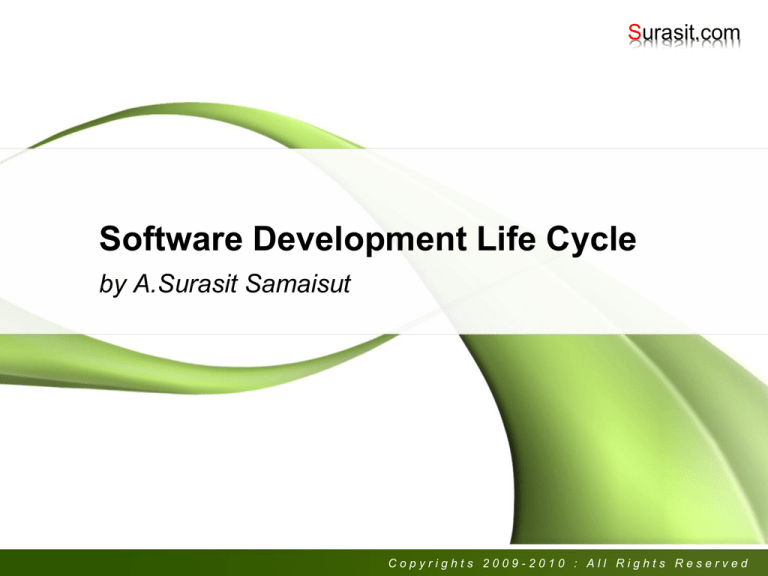
Surasit.com
Software Development Life Cycle
by A.Surasit Samaisut
Copyrights 2009-2010 : All Rights Reserved
Introduction to SDLC – Definitions
System Development Life Cycle (SDLC)
Also know as; Software Development Life Cycle
Is a systematic approach to solving business problems
Is the process of creating or altering systems, and the models and
methodologies that people use to develop these systems
Is any logical process used by a systems analyst to develop an
information system, including requirements, validation, training, and user
ownership
Page 2
The Concepts of SDLC
The concept generally refers to computer or information systems
Basic process of system development from start to finishing the system
It is divided into seven phases, each phase has unique activities
• Systems Analysis and Design by Kendall and Kendall
Page 3
SDLC: Phase 1 – Identifying
Identifying Information
• To generate a high-level view of the intended project and determine the
goals of the project.
• Problems: basic problems and technical problems
• Opportunities: business plan
• Competitors : market share / initiator
• Objectives and Goals
Page 4
SDLC: Phase 2 – Determining
Determining Information Requirements
• Interview management, operations personnel
• Gather systems/operating documents
• Use questionnaires
• Observe the system and personnel involved
who, what, where, when, why, how
Page 5
SDLC: Phase 3 – Analyzing
Analyzing system needs
• Create data flow diagrams
• Document procedural logic for data flow diagram processes
• Complete the data dictionary
• Make semi structured decisions
• Prepare and present the system proposal
• Recommend the optimal solution to management
Page 6
SDLC: Phase 4 – Designing
Designing the recommended system
• In systems design functions and operations are described in detail, including
screen layouts, business rules, process diagrams and other documentation.
The output of this stage will describe the new system as a collection of
modules or subsystems
• Basics
– Design the user interface and produce program specifications
• Techniques
– Design system controls, files and/or database and produce decision trees
or tables
Page 7
SDLC: Phase 5 – Developing
Developing and documenting software
• Design computer programs using structure charts, and pseudocode
• Walkthrough program design
• Write computer programs / coding
• Document software with help files, procedure manuals, and Web sites with
Frequently Asked Questions
Page 8
SDLC: Phase 6 – Testing
Testing and Maintaining the system
• Test and debug computer programs
• Test the computer system
• Enhance system
Page 9
SDLC: Phase 6 – Types of Testing
Types of testing:
• Data set testing
• Unit testing
• System testing
• Integration testing
• Black box testing
• White box testing
• Module testing
• Regression testing
• Automation testing
• User acceptance testing
Page 10
SDLC: Phase 7 – Evaluating
Implementing and Evaluating the system
• Plan conversion
• Train users
• Purchase and install new equipment
• Convert files
• Install system
• Review and evaluate system
Page 11
SDLC – The 7 Phases
Identifying
Determining
Analyzing
Designing
Developing
Testing
Evaluating
Page 12
Strengths of SDLC
Control
Monitor large projects
Detailed steps
Evaluate costs and completion targets
Documentation
Well defined user input
Ease of maintenance
Development and design standards
Tolerates changes in MIS staffing
Page 13
Weaknesses of SDLC
Increased development time
Increased development cost
Systems must be defined up front
Rigidity / inflexibility
Hard to estimate costs, project overruns
User input is sometimes limited
Page 14
Alternatives to SDLC
Rapid Application Development
• Refers to a type of software development life cycle which uses minimal
planning in favor of rapid prototyping
• The lack of extensive pre-planning generally allowed software to be written
much faster, and makes it more flexible to change in requirement
Waterfall Model
• is a sequential software development process, in which progress is seen as
flowing steadily downwards (like a waterfall) through the 5 phases
Page 15
SDLC – Checkpoint
Translating the algorithm into a programming language occurs at the
which step of the SDLC?
• Developing Phase
The make-or-buy decision is associated with the which step in the SDLC?
• Designing Phase
Testing process is initially perform in which step of SDLC?
• Developing Phase
Page 16


